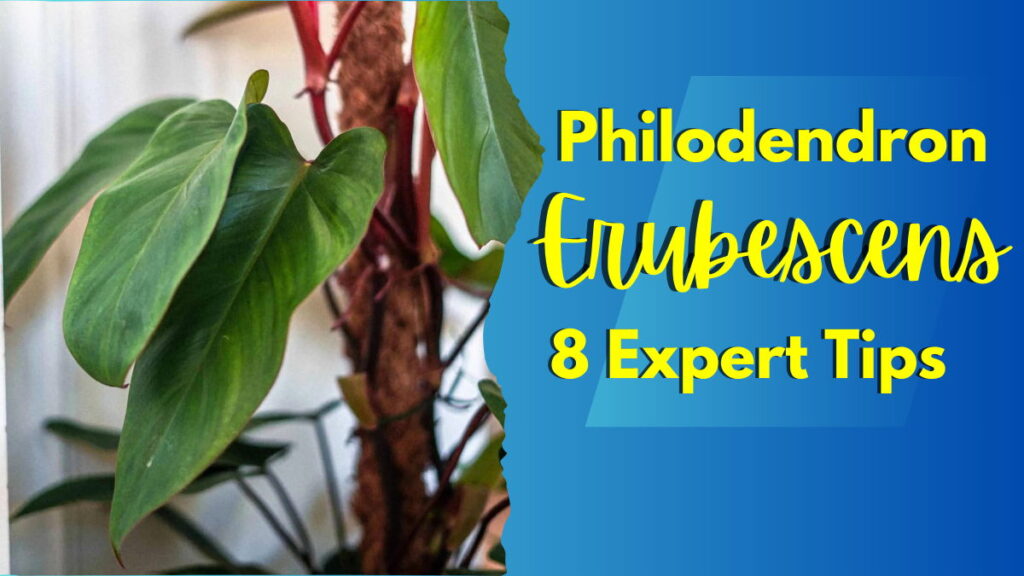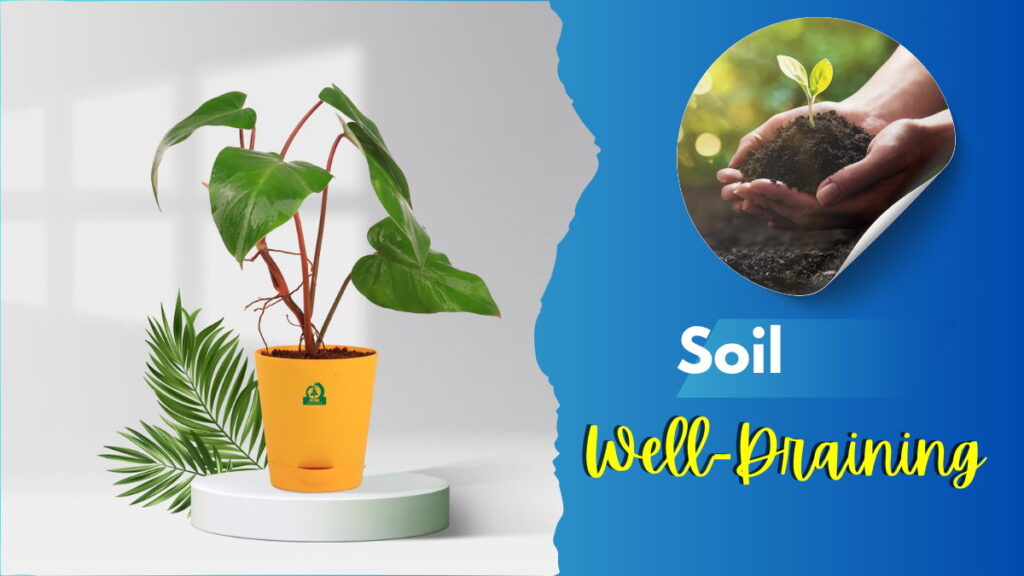Add Philodendron Erubescens to your collection for the following reasons:-
- Stunning foliage:- Cascading vines decorated with shiny, heart-shaped leaves that move from blushing pink to profound green.
- Low-maintenance:- Flourishes in bright, backhanded light and well-draining soil, making it perfect for apprentice plant parents.
- Easy propagation:- Propagate unused plants with stem cuttings in water or soil.
- Air refinement:- Breathe simply knowing this beauty is useful to expel poisons from your indoor air.

These tendrils may be kept under control with light pruning if you’d prefer not to climb.
The Philodendron Erubescens is a fast-growing vine, its elongated leaf having a light green hue overlaid with reddish brown. The leaves of this plant may suddenly turn yellow and drop due to several factors like environmental stress, lack of nutrients, or improper watering. This exotic houseplant can adapt to indoor environments where temperatures are relatively mild. According to The Sill, most of the philodendrons are toxic to people and pets.
Shape, Size & Color Of The Leaf
Heart-shaped leaves with an interesting color change. They are typically 3-6 inches long and about as wide too. young leaves begin with a pink or red blush but turn into a deep, glossy green replete with striking veins.
Growth Pattern & Height
A spreading philodendron will grow 6 -10 feet high. Properly pruned it can be kept in a bushier environment.
Philodendron Erubescens Care
Soil

Air that circulates through well-drained soil is ideal for the growth of Philodendron Erubescens. Perlite, orchid bark, and preparation mix combined provide the ideal moisture longevity and seepage balance. Neutral to slightly acidic pH range (6.0–7.0).
Watering

When the top inch of soil feels dry, water this philodendron. Keep away from overwatering, as this can cause root rot. Underwatering causes leaves to shrink while overwatering causes soft or yellowing leaves.
Sunlight

This leans in the direction of good, backlit sunlight. Try to stay away from direct sunlight as it may blacken the leaves.
Temperature & Humidity
It develops in temperatures between 18-27°C. It increases in value and high mugginess levels. Grouping plants using a stone plate, or running a humidifier can help keep up humidity.
Plant Care & Maintenance
Fertilizing
During the spring and summer growing seasons, give your plant a boost by adjusting fluid fertilizer diluted to half its original quality. Don’t fertilize in the winter.
Shaping & Pruning
Regular pruning regulates the size of the plant and stimulates development. To reshape the plant or remove tall stems and leaves, use a sharp instrument.
Repotting
When your Philodendron Erubescens outgrows its current pot or the roots become pot-bound, repot it every one to two years. Moderate development, roots occupying the pot, or excessively rapid soil drying out are indications that the plant needs to be replanted.
Propagation Methods
Stem Cuttings
The following are the steps involved in the most popular and successful method of Philodendron Erubescens propagation:
Take a cutting of a stem that has at least one node – the point where a leaf joins the stem.
Cut off the lower leaves, then submerge the cutting in water or a well-draining preparation mixture. Keep the cutting moist until roots begin to form.
Air layering
This process involves allowing a stem that is still attached to the mother plant to develop roots.
Make a small incision on a stem, cover it with plastic, and wrap it in moist foliage.
After roots form, trim the stem beneath the roots and pot it up like a new plant.
Common Problems & Solution
Diseases and Pests
Use neem oil or an insecticide cleaner to stop the pests. Overwatering can lead to fungus infections. Adjust your watering schedule and make sure there is adequate seepage.
Common Problems
Underwatering, overwatering, or a lack of light are the causes of yellowing leaves. Fall foliage often exhibits underwatering. To bring your plant’s health back, take note of the root cause.
Benefits of Growing Philodendron Erubescens
This flexible plant offers a large number of benefits:-

Aesthetic Appeal & Decorative Use
The shocking leaves and cascading vines add a touch of style and dynamic quality to any room. You can pair these plants with Florida Beauty.
Air-Purifying
Philodendron erubescens assists in expelling common poisons from indoor air.
Ease of Care
This low-maintenance plant is idealize for apprentice plant enthusiasts.
Conclusion
Philodendron Erubescens is a captivating houseplant that combines staggering aesthetics with ease of support. Its dynamic foliage, cascading development propensity, and air-purifying qualities make it a profitable expansion to any home.
With its captivating heart-shaped leaves boasting dynamic colors and its easy-going nature, this philodendron is idealize for bringing the tropics inside.
Add Philodendron Erubescens to your plant collection nowadays! And share your feedback or ask questions in the comments below. Let’s make an indoor jungle together!
How do you propagate Philodendron Erubescens?
Propagate Philodendron Erubescens with stem cuttings in water or soil.
How do you identify a Philodendron Erubescens?
We can recognize it by their heart-shaped, shiny leaves with modern development being red or pink.
Can you propagate blushing philodendron?
Yes, blushing philodendron (Erubescens) can be proliferated with stem cuttings.


1 thought on “Philodendron Erubescens: 8 Expert Tips for Thriving Plants”